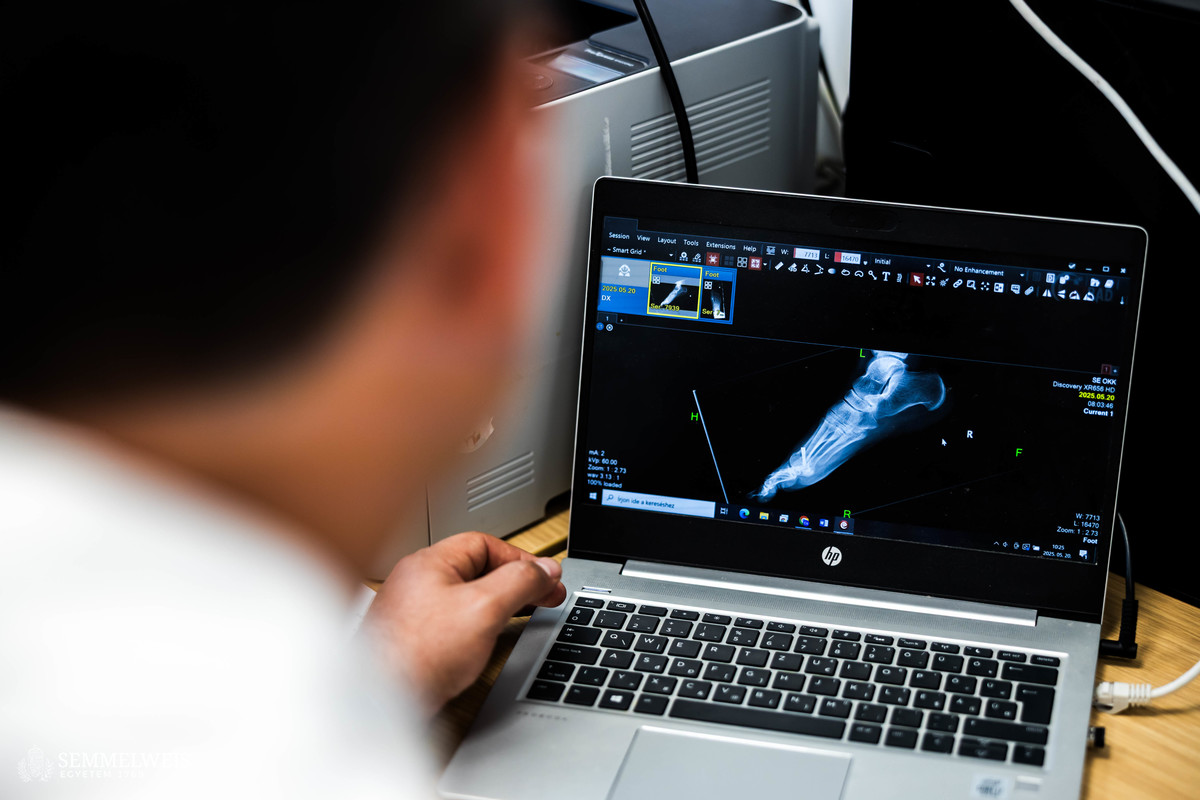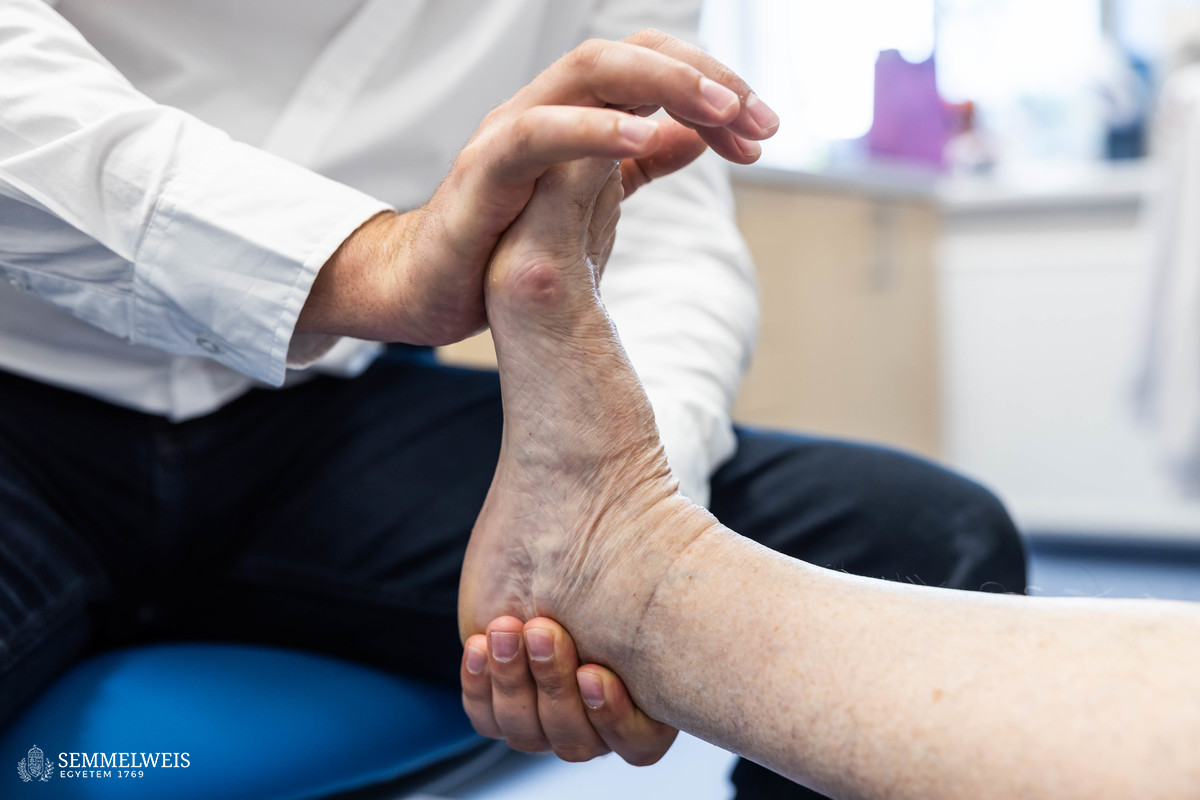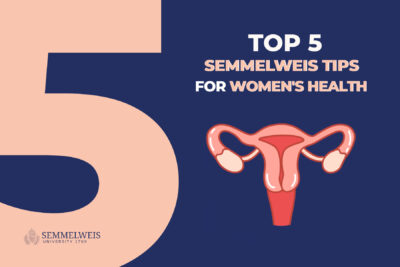1. Ossified deformities are irreversible – let’s prevent and recognize them as soon as possible
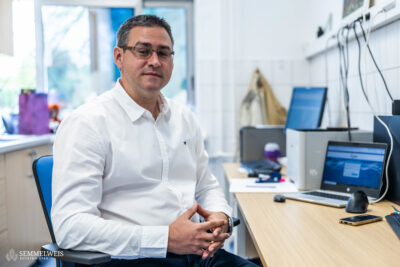 Predisposition to foot disorders is hereditary, so it is advisable to be aware of family history and accumulation. It is important to focus on prevention, such as choosing proper shoes, avoiding excess weight, and promptly addressing deformities – this may include physiotherapy or using medical devices recommended by a specialist, points out Dr. Csaba Varga, a foot surgery expert at Semmelweis University’s Department of Orthopedics. Healthy foot development begins in infancy; mild abnormalities in childhood are typically monitored, and issues like flat feet, ankle depression, or abnormal muscle tone can often be corrected up to age 6 or 7 with appropriate aids, physiotherapy, or may even heal on their own. By this age, the foot’s longitudinal arch has formed. The specialist also notes that more serious intervention may be necessary for lesions during puberty, as more significant corrections are possible before the foot reaches its final adult form.
Predisposition to foot disorders is hereditary, so it is advisable to be aware of family history and accumulation. It is important to focus on prevention, such as choosing proper shoes, avoiding excess weight, and promptly addressing deformities – this may include physiotherapy or using medical devices recommended by a specialist, points out Dr. Csaba Varga, a foot surgery expert at Semmelweis University’s Department of Orthopedics. Healthy foot development begins in infancy; mild abnormalities in childhood are typically monitored, and issues like flat feet, ankle depression, or abnormal muscle tone can often be corrected up to age 6 or 7 with appropriate aids, physiotherapy, or may even heal on their own. By this age, the foot’s longitudinal arch has formed. The specialist also notes that more serious intervention may be necessary for lesions during puberty, as more significant corrections are possible before the foot reaches its final adult form.
Preventing childhood obesity also promotes healthy feet. It is important to avoid the added burden of excess weight that could affect the final shape of the feet, emphasizes Tímea Szentpétery, physiotherapist at the Department of Orthopedics.
Established, ossified deformities such as bunions, hammer toes, painful deformities of the middle joint of the second toe, or fallen transverse and longitudinal arches are irreversible without surgery. Passive treatments, including medical aids like night splints for bunions, prefabricated or custom-made insoles for fallen transverse and longitudinal arches, and physiotherapy, can only stabilize these conditions and slow their progression. Deformities of the forefoot, such as bunions and hammer toes, or complex foot deformities in adulthood, like flat feet or hollow feet, can only be corrected through surgery.
2. Walk barefoot on different surfaces as often and for as long as you can, possibly several times a week. Learn foot exercises. Your feet will thank you for a daily care of 20-30 minutes
A sedentary lifestyle, the flat, even walking surfaces of urban environments, and poorly chosen footwear, which is either too tight or does not provide adequate support for the foot, can cause some of the muscles and/or passive supporting structures in the foot to weaken. Therefore, the muscles and joints of the foot, ankle, and leg should be exercised as much as possible, for example, by walking barefoot at home, Dr. Csaba Varga points out. It’s worth taking advantage of the summer and the grassy, earthy, gravely surfaces of beaches, parks, and gardens, or even going to a barefoot park where you can train your feet on walking surfaces made of different materials, adds Tímea Szentpétery.
 “Especially when the ankles are bent inwards or outwards, or after ankle injuries, and for people with flat feet, it is important to train the leg and sole muscles with various walking and balance exercises. Foot-specific exercises can be started at any age, but it is worth consulting a physiotherapist to learn the correct movements,” highlights Tímea Szentpétery. In addition to strengthening muscles and ligaments, this also helps stimulate the nerves in the foot responsible for the sense of orientation and body awareness.
“Especially when the ankles are bent inwards or outwards, or after ankle injuries, and for people with flat feet, it is important to train the leg and sole muscles with various walking and balance exercises. Foot-specific exercises can be started at any age, but it is worth consulting a physiotherapist to learn the correct movements,” highlights Tímea Szentpétery. In addition to strengthening muscles and ligaments, this also helps stimulate the nerves in the foot responsible for the sense of orientation and body awareness.
Ensure that the range of movement of the joints and toes is not restricted, for example, make sure you can move the big toe and the other toes independently of each other. “One of the prerequisites for effectively pushing off the ground when walking is that the big toe joint is able to move through a full range of motion. It is becoming a common phenomenon among adults, but also increasingly among children, that the metatarsophalangeal joint (toe knuckle) of the big toe is stiff, rigid, and difficult to bend. This can influence the kinematics of gait, and therefore, trigger compensatory mechanisms in the other joints of the body. These can be corrected very well with exercise,” says Tímea Szentpétery.
Your feet will thank you for a daily care of 20-30 minutes.
– Tímea Szentpétery
3. Choose footwear that allows your toes to move throughout the day
There are three aspects to consider when choosing the right footwear. The first is whether you are looking for shoes for healthy feet, points out Dr. Csaba Varga. The support of the sole is a priority, even for healthy feet.
Avoid completely flat, thin, hard soles, but also too stiff, thick soles, and shoes that are too narrow and squeeze the toes, the specialist adds.
The second aspect is the expected use: the type of activity planned, as well as the level and duration of the strain on the foot. For example, office work puts less strain on the feet during the day, therefore, it is less likely that a fashionable, but statically less optimal pair of shoes will cause quick deterioration. On the other hand, someone with a standing job combined with prolonged static stress, a florist, for example, is advised to choose comfortable footwear that fits the shape of the leg and offers ample support. Although high heels force the foot into an unfavorable position, they can be worn for shorter periods without any major consequences. However, standing or walking in them all day can cause painful deformities, as the body’s center of gravity can shift, causing excessive strain on the toes and feet, overstretching of calf muscles, and shortening of the Achilles tendon. It is worth alternating between flat and high-heeled shoes daily, advises Dr. Csaba Varga.
The third aspect is our goals: whether we want to train our feet muscles or support them as much as possible during the anticipated excessive load. Special footwear is also available for different purposes. For people with excess weight, extra attention should be paid to foot support, especially if they expect to stand or walk all day. Barefoot shoes support free movement and exercising the foot and leg muscles, as they have a flexible sole that helps to train the muscles of the foot and the leg, especially when used on uneven ground. Some physiotherapists believe that it is also useful for treating inflammation of the plantar fascia, the connective tissue that runs from the heel bone to the toes.
Tips for choosing shoes that promote healthy feet
The right footwear should have a flexible, relatively soft sole, which helps the heel and forefoot to move separately when stepping and allows the sole support inside the shoe to follow the shape of the individual’s foot as closely as possible. This can be helped by custom-made insoles, which are prepared to fit the individual’s foot by orthotists using appropriate sampling techniques, typically to manage flat foot and fallen arch, and to treat the related symptoms. To prevent dermatological problems, leather and cotton are the best materials for shoe parts touching the skin, and synthetic fiber socks should also be avoided. The upper should ventilate well and offer sufficient space for the foot and toes both lengthwise and widthwise, and provide support and stability at the heel and toe.
4. For an exhausting summer day, it’s better to opt for shoes instead of flip-flops
When choosing flip-flops, sandals, and lighter shoes to fit the warm weather, it is also worth taking into account the anticipated strain and the duration of wear. If you are going to wear sandals and slippers for long periods, choose thicker, more flexible soles that support the heel, absorb the ground reaction force as you step, and are designed to support the arches of the foot.
Experts warn against wearing one-centimeter-thin flip-flops with foam soles all day long. When wearing slippers, people with an ankle axis deformity, that is, an ankle that tilts in any direction, should be aware that these kinds of footwear do not offer lateral support. Therefore, if someone’s job or schedule requires walking or standing all day, it is better to wear shoes instead, advises Dr. Csaba Varga. When buying open sandals, even high-heeled ones, make sure that the upper holds the heel and that the edge of the strap does not press on the tendon where the big toe meets the instep. It is also better to choose ballet flats with a thicker sole and a soft, preferably leather, insole.
5. Watch for warning signs such as recurring corn, calluses on the soles, and wear on the soles
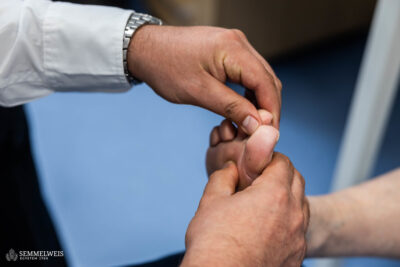 The asymmetrical wear of the soles, recurring corn and calluses on the soles can indicate that the statics of the foot are disrupted, that weight distribution problems are present even before the emergence of more serious, visible, and later painful changes. If shoes that you haven’t worn for a while have become uncomfortable, or if they hurt by the end of the day, you may want to investigate the reasons and go for a musculoskeletal assessment, after which a physiotherapist can recommend either exercise or a medical check-up.
The asymmetrical wear of the soles, recurring corn and calluses on the soles can indicate that the statics of the foot are disrupted, that weight distribution problems are present even before the emergence of more serious, visible, and later painful changes. If shoes that you haven’t worn for a while have become uncomfortable, or if they hurt by the end of the day, you may want to investigate the reasons and go for a musculoskeletal assessment, after which a physiotherapist can recommend either exercise or a medical check-up.
When foot pain develops, it is important to identify possible structural changes in the foot, knee, hip, or spine joints, vascular problems, or other diseases, emphasizes Tímea Szentpétery. If a deformation has already developed – whether it is a bunion, a flat foot, or a sinking of the transverse arch – it is worth treating it as soon as possible, because this can slow and stop the premature wear of the joints, and relieve and eliminate the pain felt when walking, suggests Dr. Csaba Varga.
+ 1. When to see a doctor?
The effects of the initial, visible changes in the foot can be counteracted by using over-the-counter devices available in medical aid shops, changing the type of shoes, and doing physiotherapy. It is advisable to change any type of insole yearly.
If you suddenly experience significant deterioration or pain, it’s worth visiting an orthopedic specialist.
“Our patients typically arrive with bunions, hammer toes, or other more severe foot deformities that have made wearing shoes difficult and cause severe pain when walking. However, with early diagnosis and treatment, this can be avoided, delayed, and the deterioration of the condition can be stabilized,” points out Dr. Csaba Varga. He also stresses that a medical diagnosis is always recommended in the case of metatarsal, ankle, and heel deformities and pains, as it is difficult for a layperson to judge the severity of these problems and find an appropriate solution. After fractures, sprains, strains, or dislocations of the foot, ankle bones, tendons, and ligaments, physiotherapy is recommended to avoid overstraining the muscles, tendons, and ligaments by holding the wrong axial position, which may cause further deformities or complaints by disrupting the statics of the foot.
Melinda Katalin Kiss
Translation: Judit Szabados-Dőtsch
Photos by Bálint Barta, Boglárka Zellei – Semmelweis University
